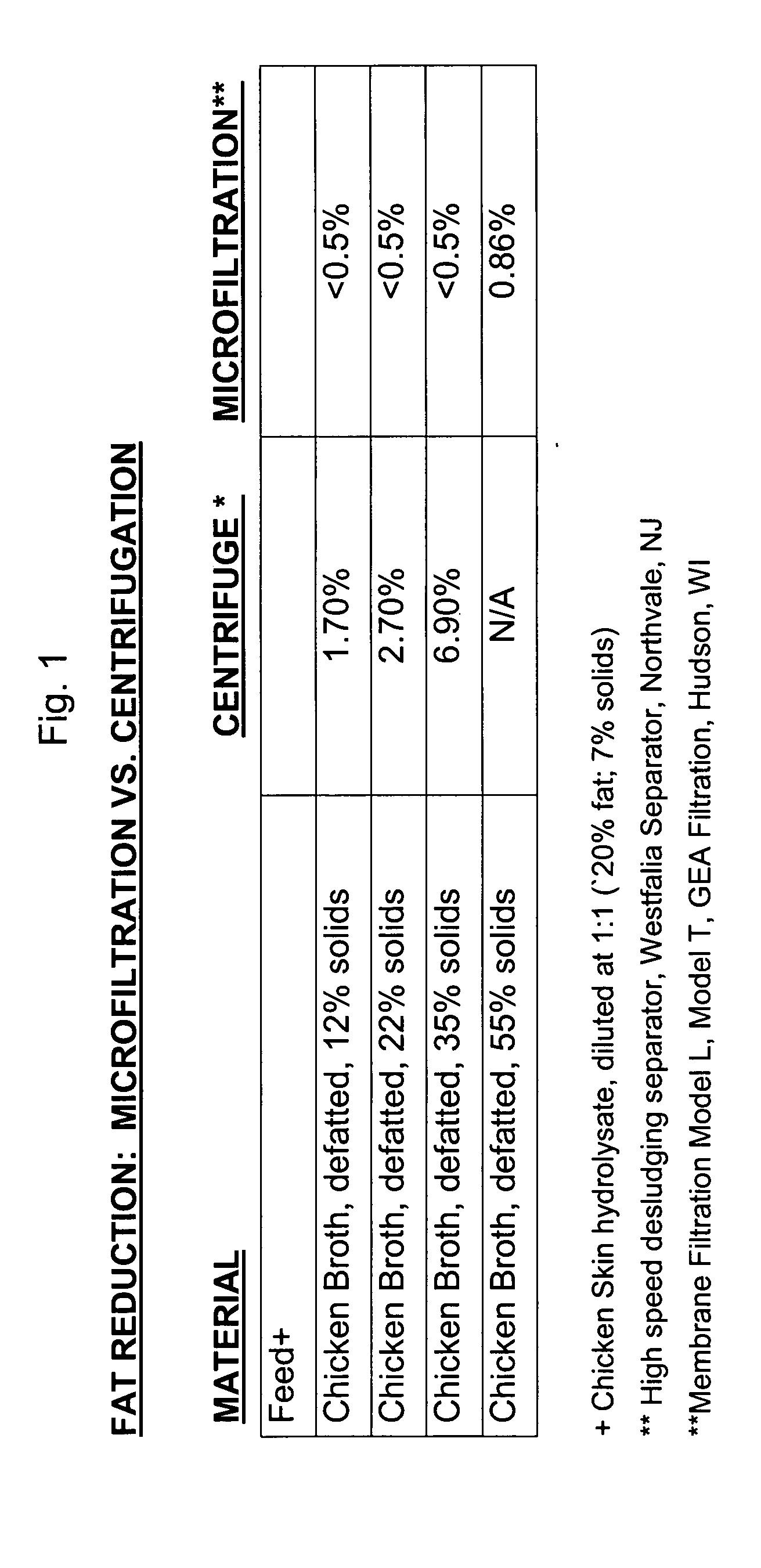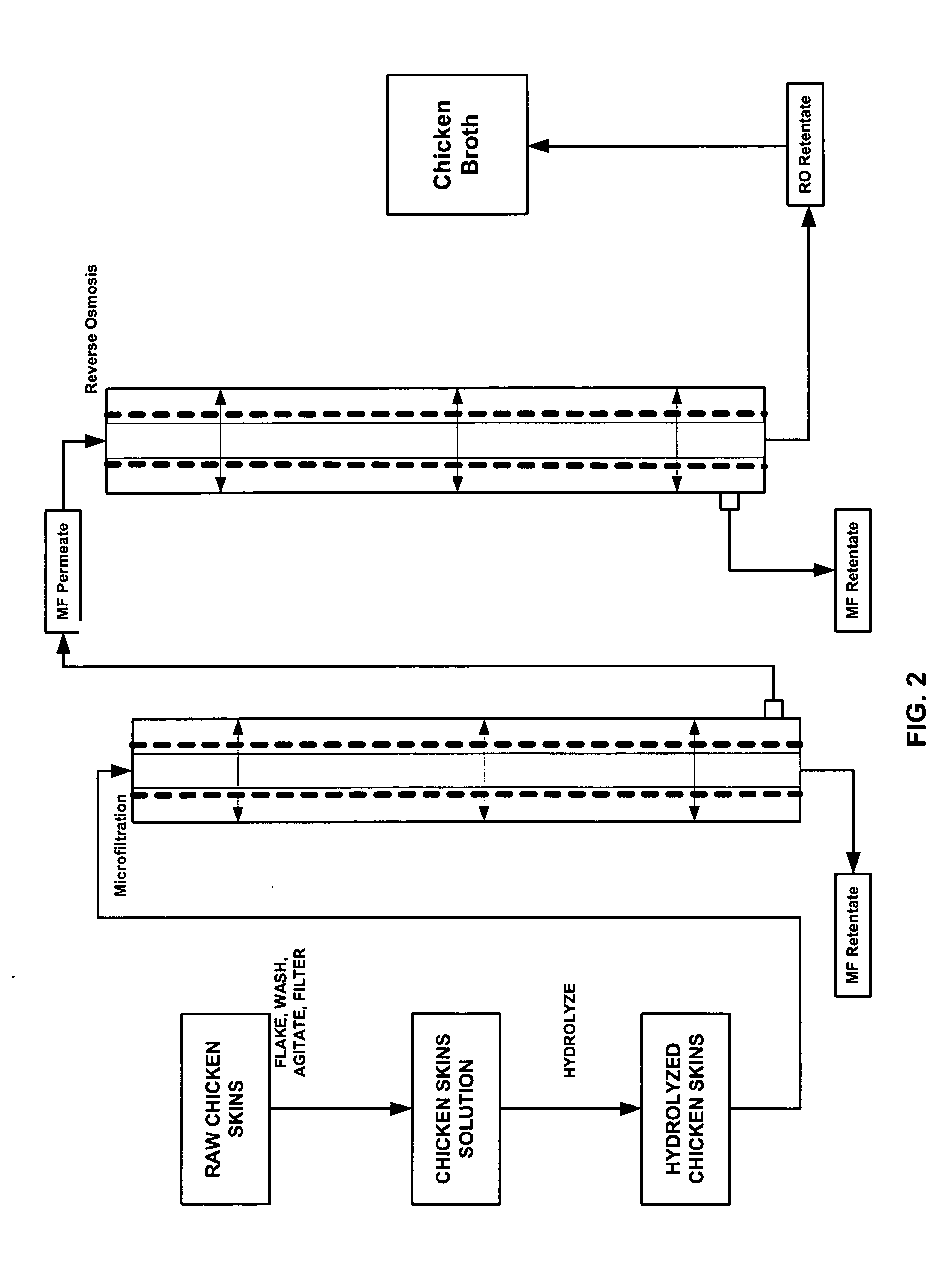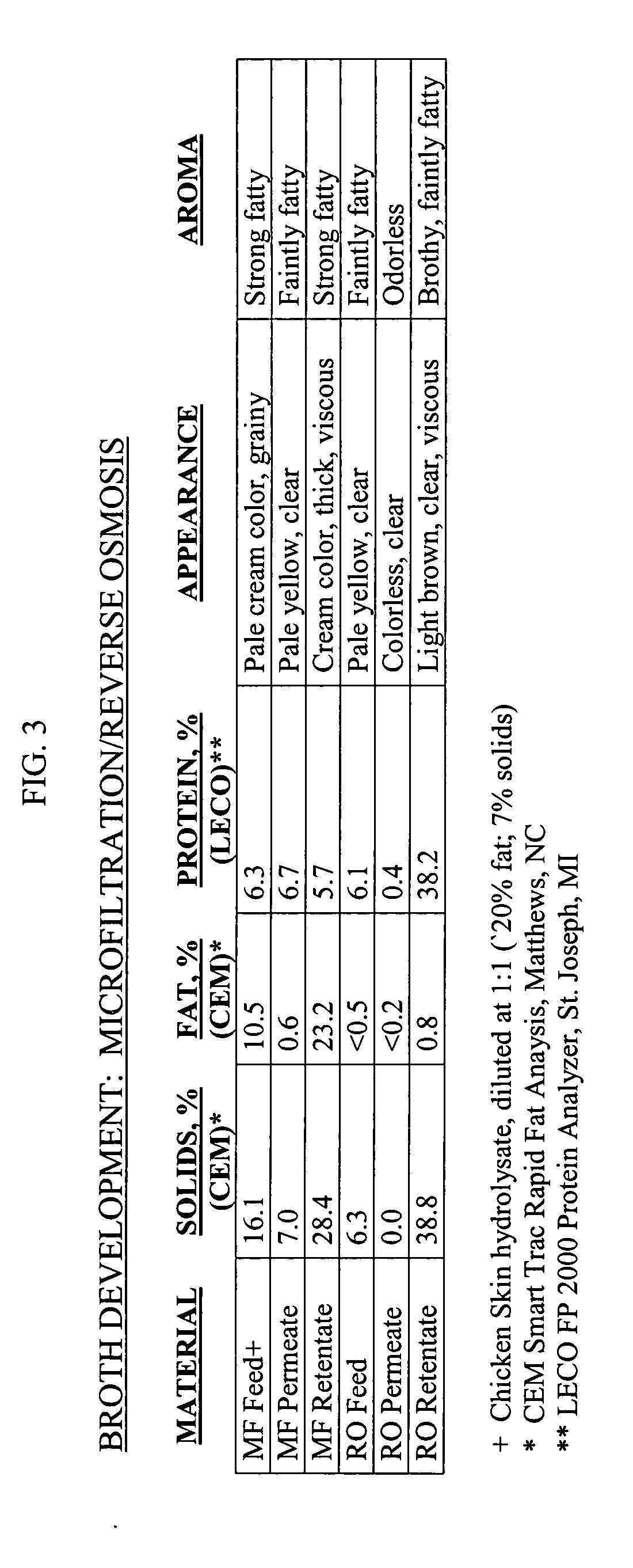Process for producing a low fat, concentrated meat broth from meat by-products
a technology of concentrated meat broth and meat by-products, which is applied in the field of low fat, concentrated meat broth from meat by-products, can solve the problems of difficult to reduce the fat content of chicken skins to less than 1%, and achieve the effect of increasing the total non-fat solids content to 32% or higher, and economically feasible to make low-fat liquid chicken broth
- Summary
- Abstract
- Description
- Claims
- Application Information
AI Technical Summary
Benefits of technology
Problems solved by technology
Method used
Image
Examples
example 1
[0037] Example 1 was performed to determine the feasibility of using a filtration process to remove fat from chicken skins to form a low-fat chicken broth having at least 32% solids and with low off-flavors for use as a base to form a variety of chicken and other poultry flavorings. Removal of the fat was performed using a MF step, which was followed by a RO step for concentration of the remaining solids. The MF membrane was a polyvinylidene fluoride (PVDF) polymer with a pore size of 0.3 microns. A ceramic membrane of equivalent permeation rating was also used successfully. The ceramic membrane generated higher flux rates than its polymeric analog. Stainless steel membranes in this category are also expected to perform likewise. For the RO process, the membrane used was a TFM® polymer membrane (GEA Filtration, Hudson, Wis.), with a molecular weight cut off of approximately 50 daltons.
[0038] A hydrolyzed chicken skins solution was passed through the MF membrane. The MF process was ...
example 2
[0039] Example 2 compares fat reduction using the microfiltration process of the current invention verses centrifugation. The starting material for each of the four comparisons is hydrolyzed chicken skins solution containing 18% to 20% fat. The high speed desludging separator, Model SA1 (Westfalia Separator, Inc., Northvale, N.J.) was used to centrifuge the hydrolyzed chicken skins solution during the centrifugation test. The MF membrane used was identical to the MF membrane used in Example 1. As noted in Example 1, after the MF step, the MF permeate was fed through a RO membrane which yielded the chicken broth having total solids as high as 46%. The fat reduction efficiency of both techniques was compared at solids levels of 12%, 22%, 35% and 55%, FIG. 1. For centrifugation, all concentration steps were performed using a standard evaporation technique starting with a 12% solids broth that resulted from the defatted centrifuge run. As previously stated, heating the broth at or near ...
example 3
[0042] Example 3 was conducted to demonstrate the effect of the proteolytic process for enhancing the retention of non-fat solids and in particular proteinaceous matter. While various enzymes were investigated for determining the optimum degree of hydrolysis, papain was selected based on its high proteolytic activity and low cost. Flaked chicken skins were partially defatted to remove much of the loosely held fat globules. An equivalent amount of water was added. To this water / chicken skins mixture, 0.25% of papain was added and the product agitated for one hour at 120° F. Following inactivation of the enzymes at 180° F., the hydrolyzed skins which now appear as a fine, homogenous suspension were filtered through a microfiltration process followed by a reverse osmosis process. The broth derived from the RO retentate was used as a base ingredient in a chicken flavor formulation in place of a commercial chicken broth. The resulting chicken flavor developed from this chicken skins brot...
PUM
 Login to View More
Login to View More Abstract
Description
Claims
Application Information
 Login to View More
Login to View More - R&D
- Intellectual Property
- Life Sciences
- Materials
- Tech Scout
- Unparalleled Data Quality
- Higher Quality Content
- 60% Fewer Hallucinations
Browse by: Latest US Patents, China's latest patents, Technical Efficacy Thesaurus, Application Domain, Technology Topic, Popular Technical Reports.
© 2025 PatSnap. All rights reserved.Legal|Privacy policy|Modern Slavery Act Transparency Statement|Sitemap|About US| Contact US: help@patsnap.com



